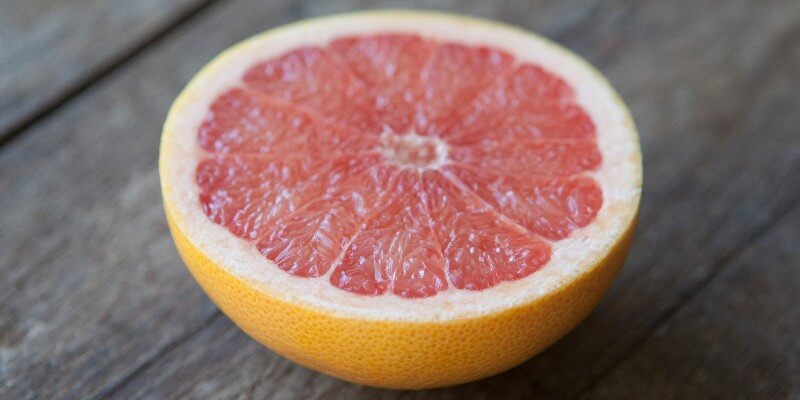by Melissa Chichester
The actual term “vitamin” wasn’t coined until 1912 by Polish biochemist Casimir Funk who originally isolated Vitamin B3 (niacin). In humans, there are 13 letter vitamins that can be classified as either fat- or water-soluble. Vitamins A, D, E, and K are fat-soluble, meaning they are absorbed with the assistance of lipids through the intestines. The B-complex group and Vitamin C are all water-soluble, meaning they dissolve easily in water. Before 1935, the only way to receive vitamins was by food, but today vitamins are available to maintain balanced wellness through supplements, fortified foods, and fruits and vegetables. Let’s take a walk through the alphabet of the 13 letter vitamins that nourish our bodies daily.
Vitamin A is best known for maintaining eye health, but it also contributes to immune system health.* Food sources of Vitamin A include carrots, pumpkin, squash, milk, leafy greens, and sweet potatoes. Vitamin A also is essential for maintaining healthy skin.*
Part of the water-soluble B-complex group, Vitamin B-1 is also known as thiamine. Food sources of B-1 include pork, cantaloupe, and long-grain rice. Vitamin B-1 is integral to maintaining nervous system health and supporting energy metabolism.*

Did you know that Vitamin B-2 is actually fluorescent under UV light and used to detect industrial leaks? Also known as riboflavin, Vitamin B-2 is found in dairy products, eggs, mushrooms, almonds, and whole grains. It is also known to aid in the metabolism of carbohydrates, fats and protein to support energy production for the body.*
Also known as niacin, Vitamin B-3 is best known for its contribution to energy metabolism and the nervous system.* It also supports cellular growth and the skin.* Food sources of B-3 include eggs, tuna, and mushrooms. Interestingly, between 1906 and 1940, over 100,000 Americans died of pellagra, which is niacin deficiency. Because of this discovery, deficiency today is uncommon.
Vitamin B-5 is also known as pantothenic acid and is found in small quantities in nearly every food with the highest amounts found in beef liver. The name comes from a Greek word meaning “everywhere.” In the body, Vitamin B-5 is required by all cells and it helps convert fats, carbohydrates, and proteins into energy.*

Potatoes, turkey, tree nuts, and bananas are all sources of Vitamin B-6, also known as pyridoxine. Vitamin B-6 plays a role in over 100 enzymatic reactions in the body, mostly involved in energy and protein metabolism.*
Best known by the name biotin, Vitamin B-7 is found in whole wheat bread, raspberries, egg yolks, liver, and peanuts. Biotin assists in energy metabolism in cells and plays a role in maintaining the health of hair, skin, and nails.*
Vitamin B-9, or folic acid, supports cardiovascular health in both men and women; however, it is especially important for pregnant women.* Folic acid also supports the development of new cells and energy metabolism.* Food sources of folic acid include whole grains, leafy green vegetables, and dairy products.
Vitamin B-12 is involved in every cell of the body, especially reactions that are involved in the breakdown of nutrients such as amino acids for supporting energy metabolism.* Because it is not found in vegetables in significant amounts, many vegans and vegetarians supplement with Vitamin B-12. Food sources of B-12 include salmon, beef, and crab. Because it isn’t as readily available after the age of 50, it is recommended that older adults consume foods fortified with B-12 or take a supplement.

Vitamin C is kind of a superstar, being that is likely the most well-known of all the letter vitamins. What it does for the body is impressive, too! Vitamin C provides antioxidant support, supports overall well-being, and contributes to immune health.* Food sources of Vitamin C include oranges, lemons, water, and grapefruit.
Vitamin D, the “sunshine vitamin,” helps maintain a healthy immune system, supports bone health, and plays an important role in the absorption of calcium.* Individuals with limited sun exposure may need to supplement with Vitamin D. Sardines, mushrooms, and eggs are all food sources of Vitamin D.
Vitamin E is an antioxidant that helps fight free radicals and supports immune function.* Deficiency is rare, as Vitamin E is present in many foods, including nuts, seeds, and vegetables. Vitamin E oil is also a nourishing moisturizer for dry skin.
The last of the letter vitamins is Vitamin K, often known as the “forgotten” vitamin. Involved in normal blood clotting and bone health, Vitamin K comes in two forms: K1 and K2.* Food sources of K1 include leafy greens, blueberries, and pine nuts. K2 is found in natto, cheese curds, and dark meat chicken.